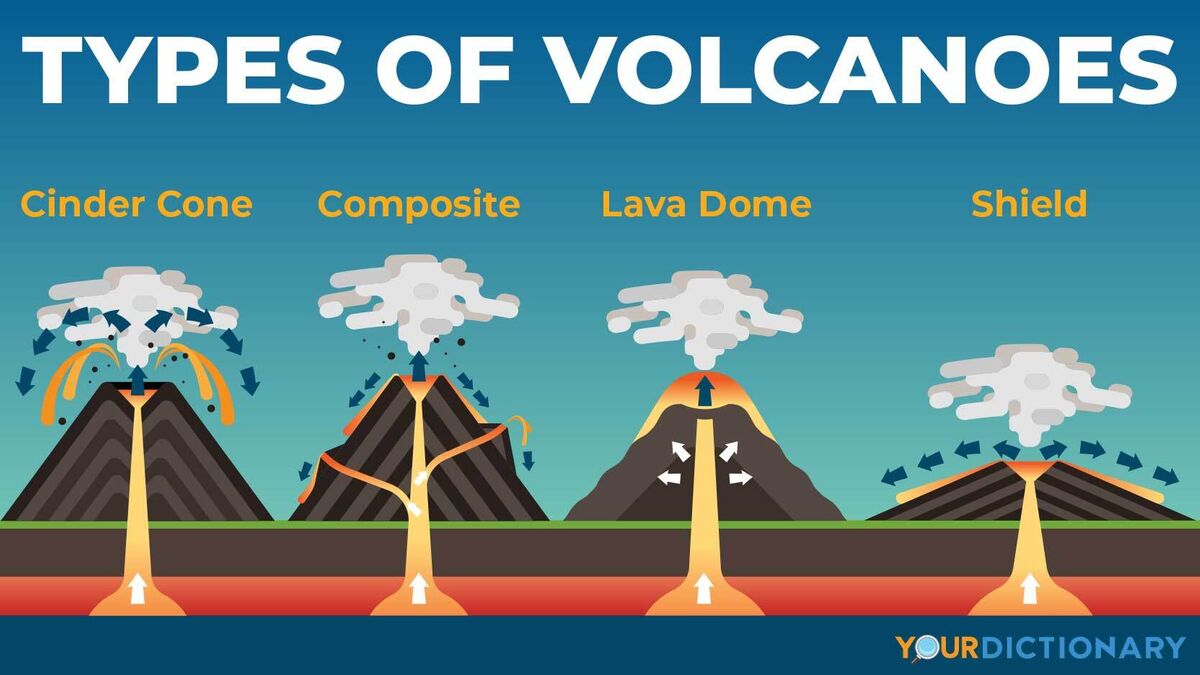Types of Volcanoes

Volcanoes come in different types based on their shapes, eruption styles, and the type of lava they produce. The three main types of volcanoes are shield volcanoes, stratovolcanoes (or composite volcanoes), and cinder cone volcanoes. Here's an overview of each type:
-
Shield Volcanoes:
- Shape: Shield volcanoes have broad, gently sloping profiles that resemble a warrior's shield lying on the ground.
- Eruption Style: They are characterized by relatively gentle eruptions, producing basaltic lava flows with low viscosity. These lava flows can cover large areas.
- Examples: Mauna Loa and Mauna Kea in Hawaii are classic examples of shield volcanoes.
-
Stratovolcanoes (Composite Volcanoes):
- Shape: Stratovolcanoes have a steeper profile and are typically composed of alternating layers of lava flows, volcanic ash, and other volcanic debris.
- Eruption Style: They are associated with explosive eruptions due to the higher viscosity of their magma (often andesitic or dacitic). These eruptions can result in pyroclastic flows, ash clouds, and lava domes.
- Examples: Mount St. Helens in the United States, Mount Fuji in Japan, and Mount Vesuvius in Italy are examples of stratovolcanoes.
-
Cinder Cone Volcanoes:
- Shape: Cinder cone volcanoes are steep-sided, conical hills or small mountains built up by the accumulation of volcanic debris, such as volcanic ash, tephra, and volcanic rocks called cinders or scoria.
- Eruption Style: They typically have short-lived, relatively explosive eruptions that produce pyroclastic material that falls back to the ground, building up the cone.
- Examples: Paricutin in Mexico and Sunset Crater in the United States are examples of cinder cone volcanoes.
In addition to these main types, there are also other less common types of volcanoes, and variations can occur based on specific geological conditions. For instance, fissure eruptions can produce volcanic fissures or vents without a distinct cone shape. Additionally, underwater volcanoes, known as seamounts, can form beneath the ocean's surface.
The classification of volcanoes is not always rigid, and some volcanic structures may exhibit characteristics of multiple types. The type of volcano is often influenced by factors such as the composition of the magma, the eruption dynamics, and the geological setting.
Thank you,
